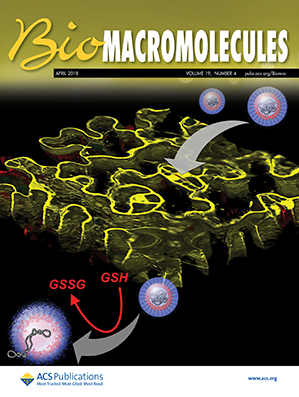Stimuli-Responsive Polymeric Nanocarriers Accelerate On-Demand Drug Release to Combat Glioblastoma
IF 5.5
2区 化学
Q1 BIOCHEMISTRY & MOLECULAR BIOLOGY
引用次数: 0
Abstract
Glioblastoma multiforme (GBM) is a highly malignant brain tumor with a poor prognosis and limited treatment options. Drug delivery by stimuli-responsive nanocarriers holds great promise for improving the treatment modalities of GBM. At the beginning of the review, we highlighted the stimuli-active polymeric nanocarriers carrying therapies that potentially boost anti-GBM responses by employing endogenous (pH, redox, hypoxia, enzyme) or exogenous stimuli (light, ultrasonic, magnetic, temperature, radiation) as triggers for controlled drug release mainly via hydrophobic/hydrophilic transition, degradability, ionizability, etc. Modifying these nanocarriers with target ligands further enhanced their capacity to traverse the blood–brain barrier (BBB) and preferentially accumulate in glioma cells. These unique features potentially lead to more effective brain cancer treatment with minimal adverse reactions and superior therapeutic outcomes. Finally, the review summarizes the existing difficulties and future prospects in stimuli-responsive nanocarriers for treating GBM. Overall, this review offers theoretical guidelines for developing intelligent and versatile stimuli-responsive nanocarriers to facilitate precise drug delivery and treatment of GBM in clinical settings.刺激响应型聚合物纳米载体加速药物按需释放以抗击胶质母细胞瘤
多形性胶质母细胞瘤(GBM)是一种高度恶性的脑肿瘤,预后不良,治疗方案有限。通过刺激响应型纳米载体给药有望改善多形性胶质母细胞瘤的治疗方法。在综述的开头,我们重点介绍了携带刺激活性聚合物纳米载体的疗法,这些疗法主要通过疏水/亲水转换、可降解性、可电离性等,利用内源性刺激(pH 值、氧化还原、缺氧、酶)或外源性刺激(光、超声波、磁、温度、辐射)作为药物控释的触发器,从而有可能增强抗 GBM 反应。用目标配体修饰这些纳米载体可进一步增强其穿越血脑屏障(BBB)的能力,并优先在胶质瘤细胞中积聚。这些独特的功能有可能使脑癌治疗更有效,不良反应最小,疗效更佳。最后,综述总结了刺激响应型纳米载体在治疗脑胶质瘤方面的现有困难和未来前景。总之,本综述为开发智能化、多功能的刺激响应型纳米载体提供了理论指导,有助于在临床环境中精确给药和治疗 GBM。
本文章由计算机程序翻译,如有差异,请以英文原文为准。
求助全文
约1分钟内获得全文
求助全文
来源期刊

Biomacromolecules
化学-高分子科学
CiteScore
10.60
自引率
4.80%
发文量
417
审稿时长
1.6 months
期刊介绍:
Biomacromolecules is a leading forum for the dissemination of cutting-edge research at the interface of polymer science and biology. Submissions to Biomacromolecules should contain strong elements of innovation in terms of macromolecular design, synthesis and characterization, or in the application of polymer materials to biology and medicine.
Topics covered by Biomacromolecules include, but are not exclusively limited to: sustainable polymers, polymers based on natural and renewable resources, degradable polymers, polymer conjugates, polymeric drugs, polymers in biocatalysis, biomacromolecular assembly, biomimetic polymers, polymer-biomineral hybrids, biomimetic-polymer processing, polymer recycling, bioactive polymer surfaces, original polymer design for biomedical applications such as immunotherapy, drug delivery, gene delivery, antimicrobial applications, diagnostic imaging and biosensing, polymers in tissue engineering and regenerative medicine, polymeric scaffolds and hydrogels for cell culture and delivery.
 求助内容:
求助内容: 应助结果提醒方式:
应助结果提醒方式:


